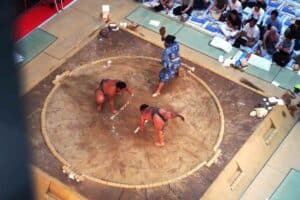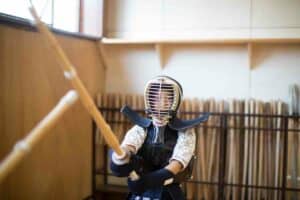The modern Japanese martial art Kendo (meaning ‘way of the sword’) is an excellent activity to perfect at home.
Compared to many other martial arts, training in Kendo is pretty noisy, but this likely isn’t a problem if you’re practicing at home!
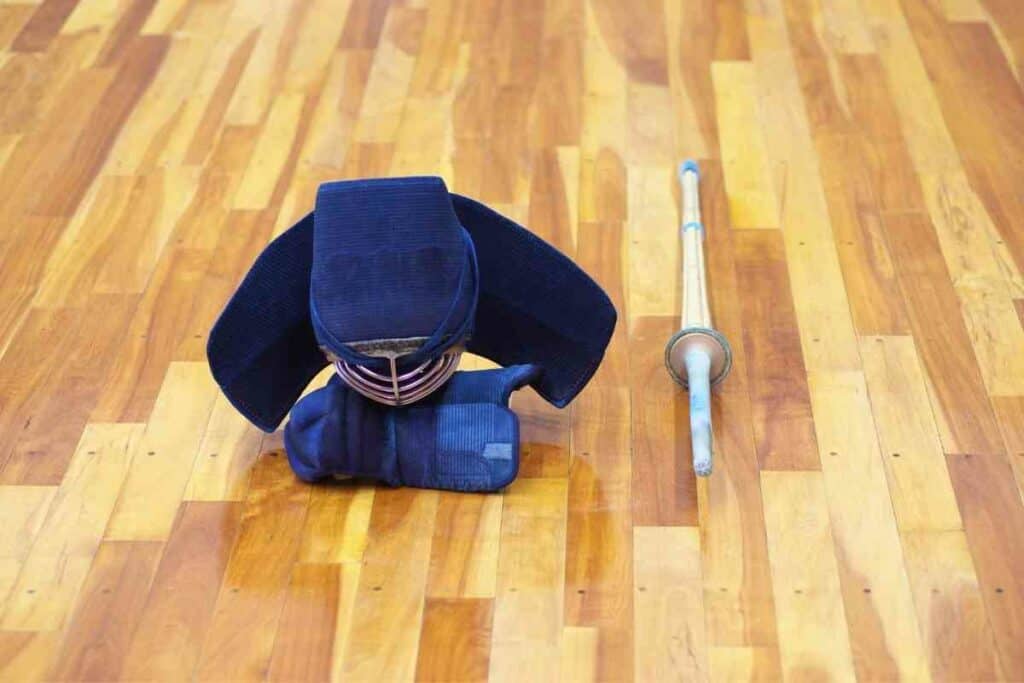
There are lots of things you can do outside the dojo to improve your performance in Kendo.
In This Article – We’ve outlined 10 Kendo practice drills you can do at home. Bur first, let’s look at why practicing Kendo is important.
Table of Contents
Why Practice Kendo
The purpose of Kendo is to mold the body and mind, to strive for improvement, and to pursue your own cultivation for your whole life.
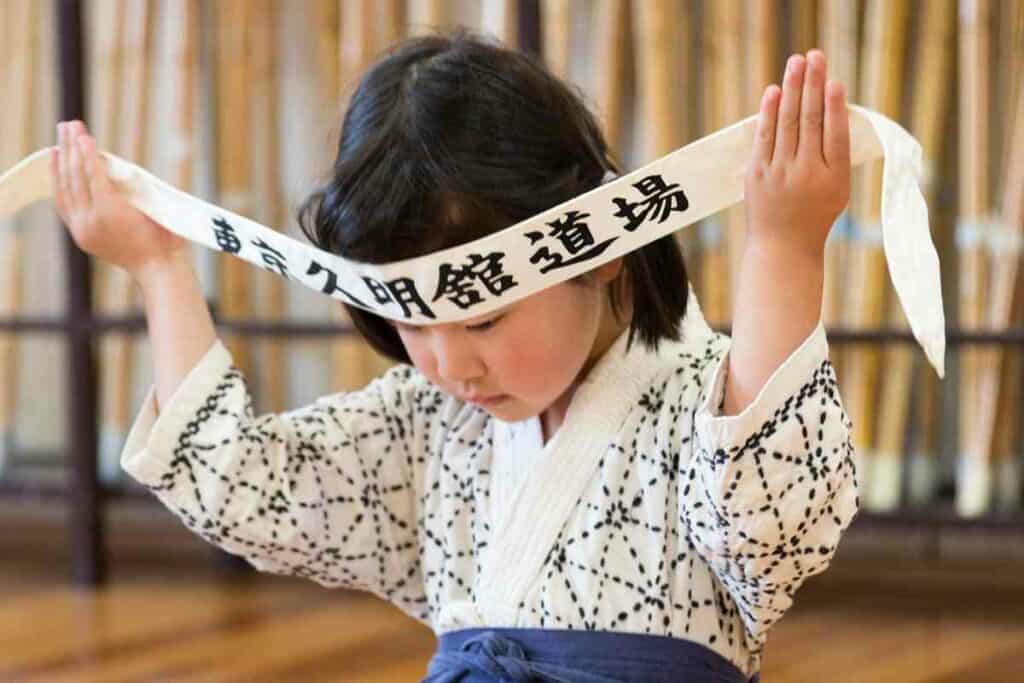
The martial art is all about holding honor and human courtesy in esteem and associating other people with sincerity.
Though this is a martial art that involves swords, it isn’t about killing someone or hurting them – quite the opposite!
Getting ready for a journey to the Land of the Rising Sun? Explore our partner, Japan Objects Store, to discover a range of essentials for your trip, encompassing everything from travel necessities to authentic Japanese items.
Why Practice Kendo at Home
If you learn Kendo, you’ll know that there is always something to improve on.
Good habits aren’t made in a day, nor are movements kept once they’re mastered the first time.
Kendo requires a contact re-evaluation of all of its elements and practicing things like posture is essential.
Unless you’re taking hours and hours of Kendo classes a week, you will need to practice what you’ve learned in class in your own home too.
So, without further ado, let’s look at our 10 Kendo practice drills to do at home.
1. Practice Relaxing
This seems like an easy task but people often find it more challenging than they think.
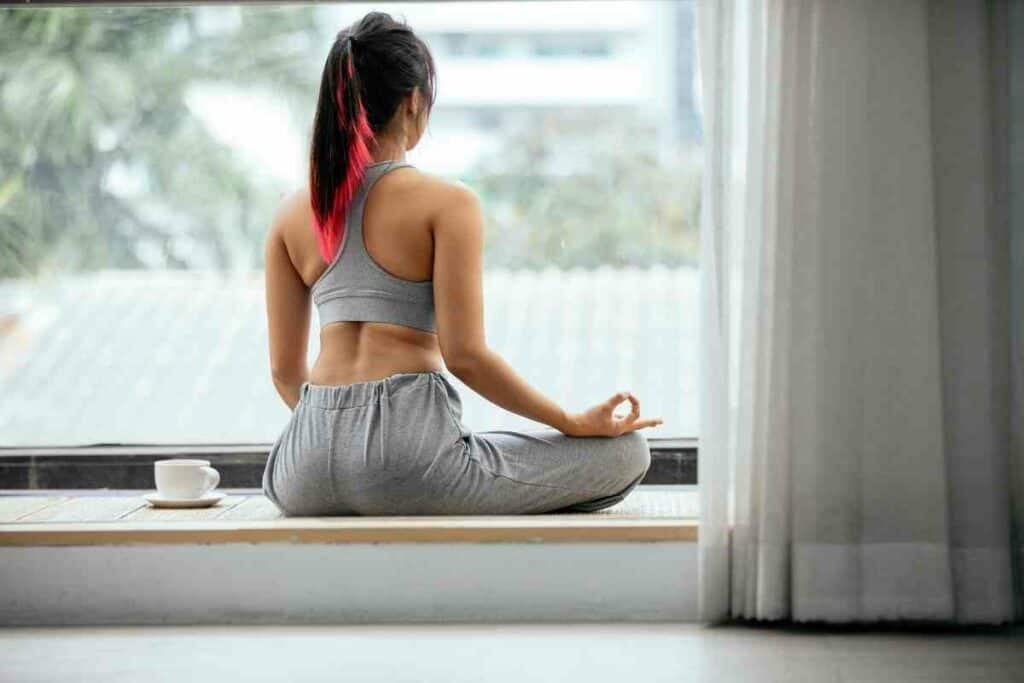
When people start Kendo, they’re often tense because they are ready to fight. However, having a relaxed body and being aware of all of your muscles is key.
To Practice Relaxing – Take up different postures (standing, sitting, kneeling, laying down) and concentrate on what the different muscle groups are doing in your body.
Focus on each muscle at a time and try to relax it and relieve any tension.
If you practice keeping your muscles relaxed in a variety of postures (not just Kendo ones), it will become second nature to you.
Booking.com2. Practice Alignment
Body alignment in Kendo is important.
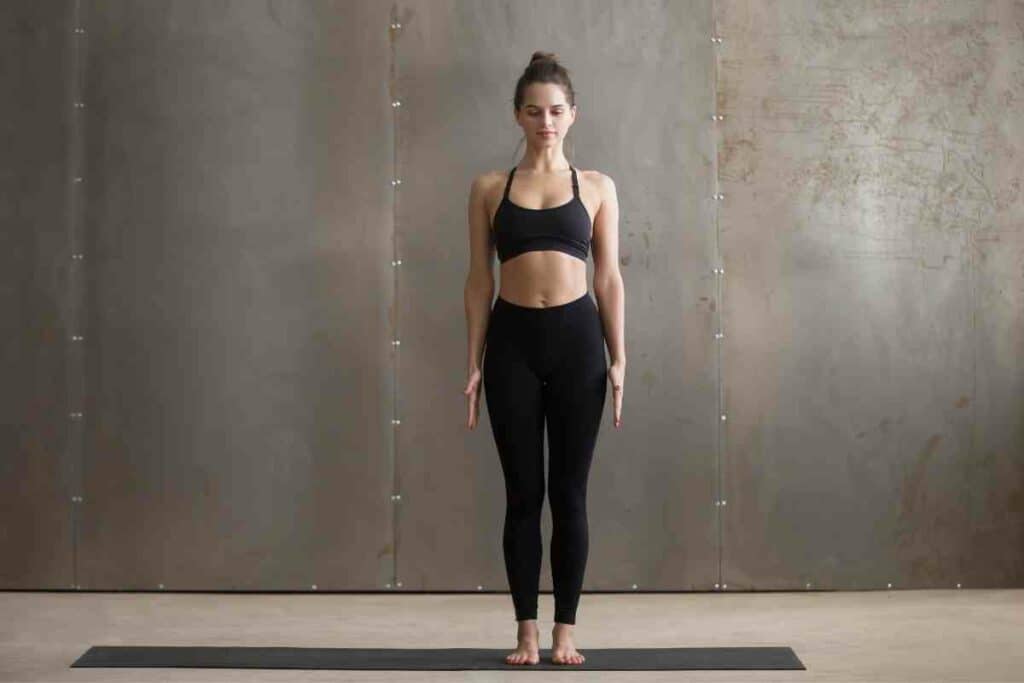
Practice aligning your body. Stand straight and see if you can get your ears, shoulders, hip bones, knees, and ankles aligned in a straight line.
Look in a mirror from the side or film yourself.
The idea is that you’ll begin to learn how to feel where each part of your body is when you can’t see it in a mirror.
3. Practice Shizentai (Natural Posture)
The natural posture in Kendo is the ideal posture to attack an opponent whenever you need to.
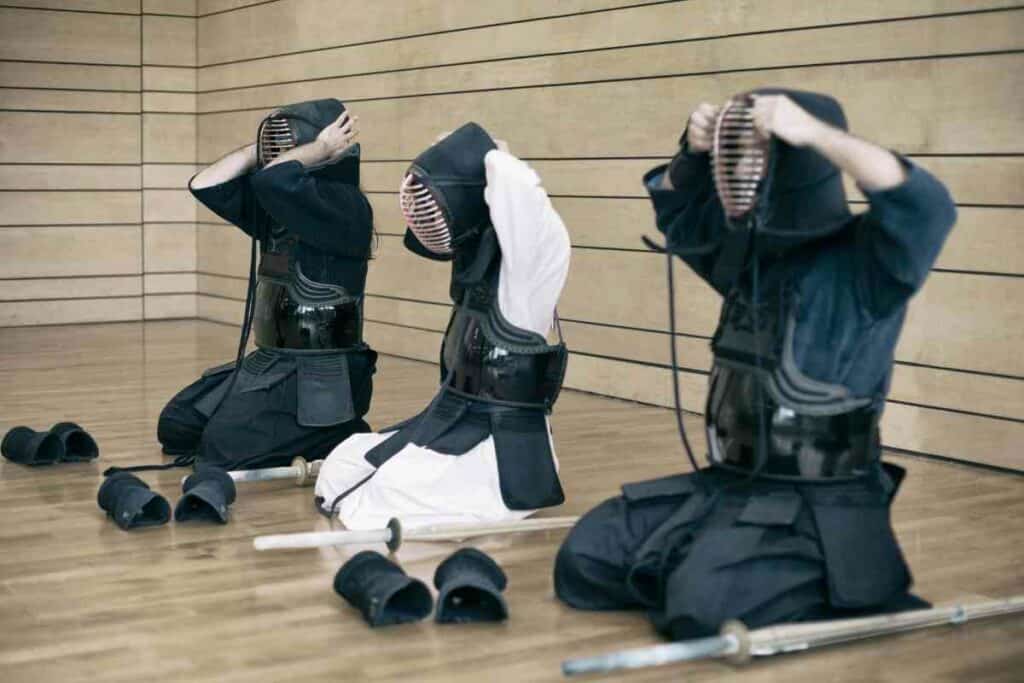
To develop this natural posture for Kendo, the key elements are:
- Straightening the back of the neck
- Pulling the chin in
- Tightening your glutes
Then, once you’ve mastered that, do the following:
- Bring up your shoulders
- Push them back so that it feels as though your shoulder blades are almost touching
- Drop your shoulders
Repeated these steps to loosen up your posture and until this starts to feel more balanced.
Then, to finish the shizentai, repeat all of the above while keeping your heels together and your toes 45 degrees apart.
4. Wrist Drills for Kendo
As well as being good for warming up your wrists, wrist drills are a great way of improving strength and flexibility during your Kendo hits.
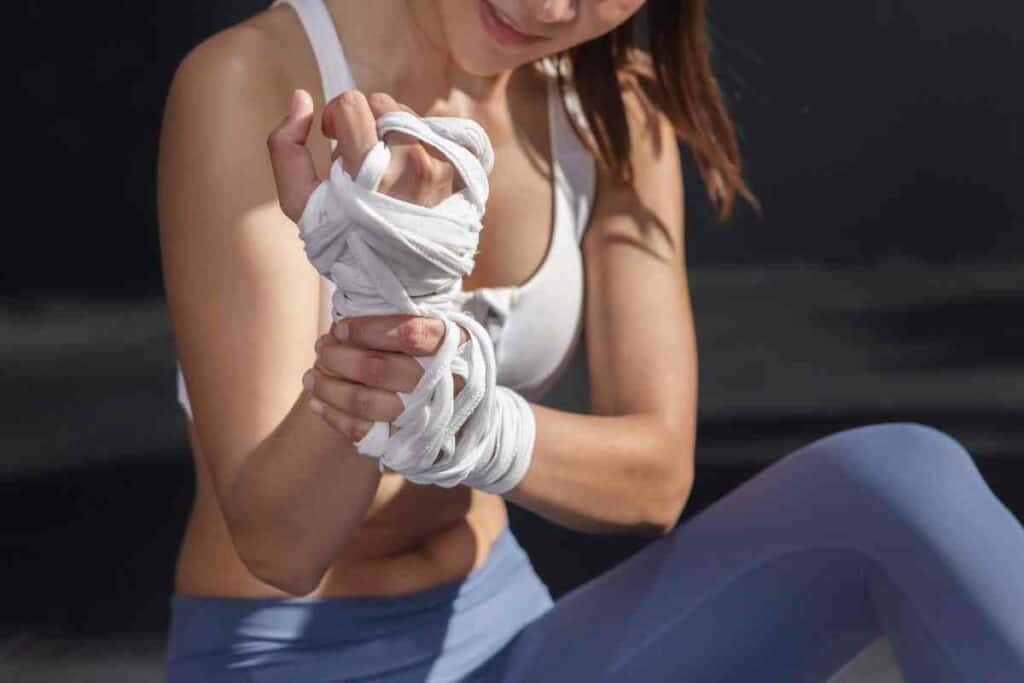
Here are some wrist exercises you can try:
- Palms up, palms down – with your arms outstretched horizontally, place your palms so they are facing up to the sky. Then, slowly turn them downwards to face the floor. Repeat.
- Wrist curl – grab some light dumbells or a couple of bottles of water. Sit so that your forearms are resting on your knees with your wrists past the knee and your palms upward. Curl your wrists slowly up and down.
- Pronate wrist curl – this is the same exercise as above but this time you do it with your palms facing downwards.
5. Practice Your Kiai
One of the great things about Kendo is that being loud is expected!
Almost every Kendo movement and cut should occur with Kiai. This battle cry is a great thing to practice when you’re at home.
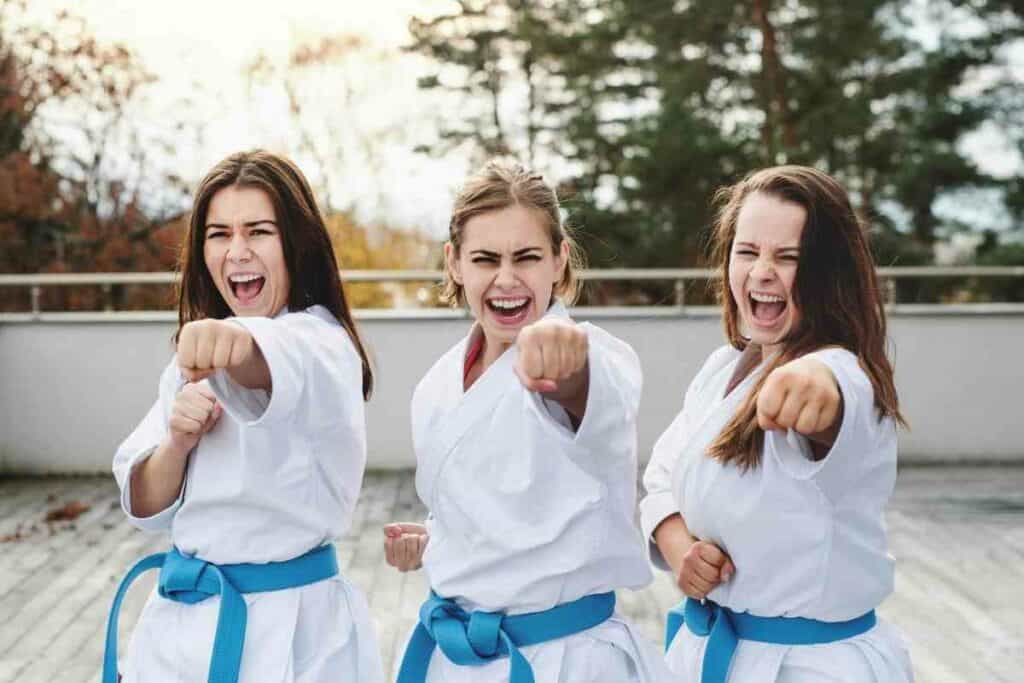
The Kiai represents your determination, inner strength, and energy flow. It also demonstrates to your opponent (and everyone else) that you’re there to win.
If you’re a beginner, you might find this aspect of Kendo a bit embarrassing, but you soon get used to it as it’s an important part of Kendo practice.
Finally, Kiai is Personal – There is no unified or correct way to do it. Your Kiai will evolve as you practice and improve.
6. Practice Footwork
Your home is the ideal place to practice your footwork in between classes.
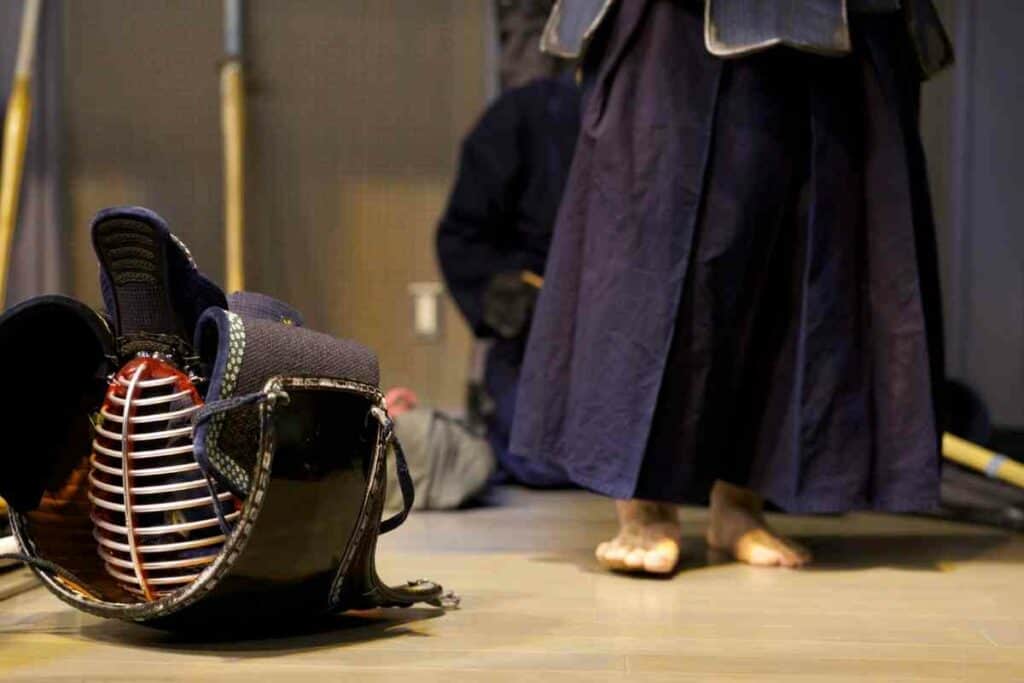
Here are some steps that you can practice simply at home:
- Okuri-ashi – this is a short, sliding step that you use between strikes. Many believe that this footwork came from a need. When warriors were fighting on difficult terrain, they used this technique to determine where they could place their next step safely, while keeping their eyes on their opponent.
- Fumikomi-ashi – this stomping leap/step is used to push you into your opponent. It is used when attacking or striking.
7. Practice Wielding Your Shinai
Even though your shinai looks stick-like, it actually represents a sword.
While the whole length of it is used for blocking or paring, only the final third is for striking.
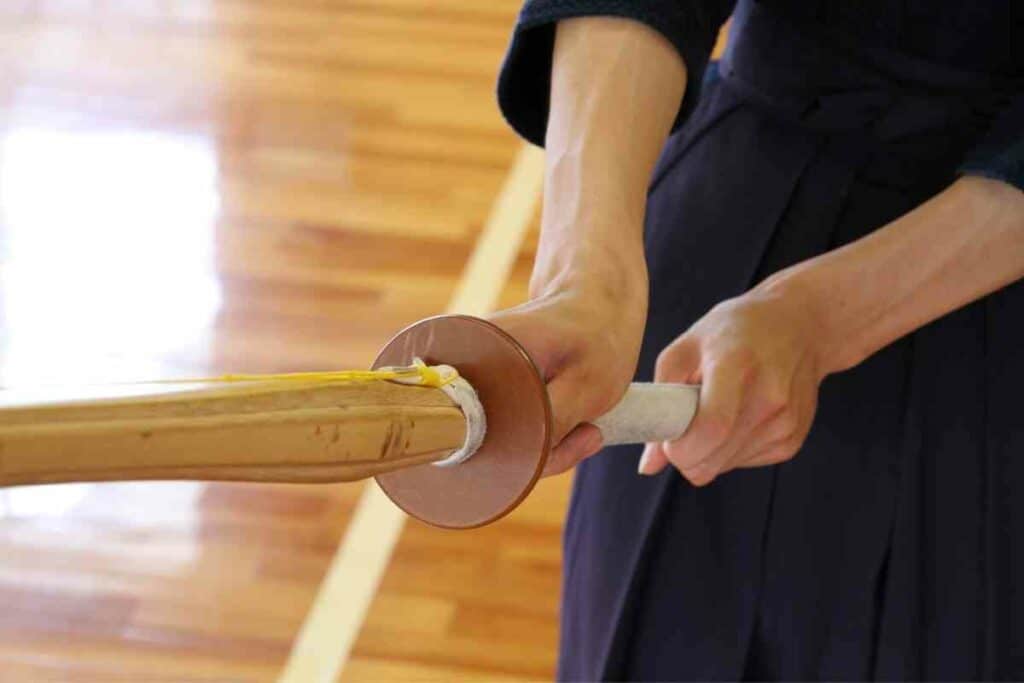
All hitting and cutting Kendo techniques center around a general downward cut.
With this, the shinai is held in both hands and there are three elements to the cut:
- the movement
- the strike
- and the Kiai
The movement begins from low in the abdomen and then travels upwards to the shoulders, wrists, and elbows to deliver the strike as well as to the lower part of the body to drive you towards the target.
Strikes can land on either side of the abdomen (Do-uchi), the wrists (Kote-uchi), throat area, or the head (Men-uchi).
Cuts can either be full or long with the shinai over the person’s head or short, with the shinai traveling the shortest distance in order to cut the opponent’s reaction time.
8. Practice Basic Hitting
One of the most important kendo practice drills is basic hitting.
Basic hitting is a building block for all moves in Kendo. When you’re just practicing at home, speed isn’t important.
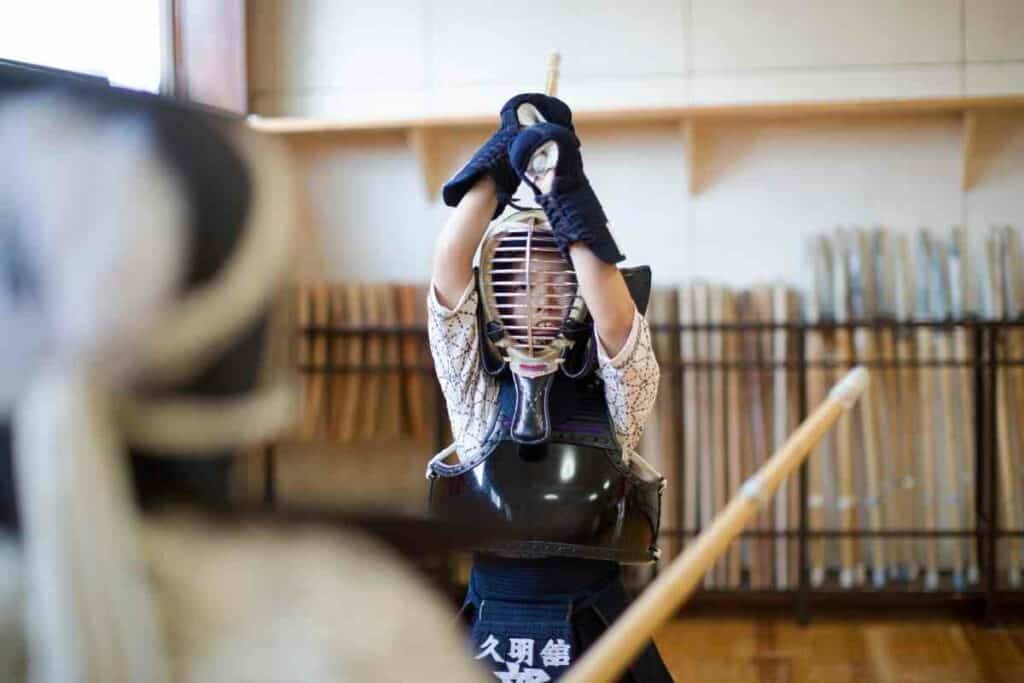
What you should focus on is Ki-Ken-Yai (spirit-sword-body), which is the combination of body movement, propper hitting, footwork¸ kamae, and Kiai in flow.
Only when you’re comfortable with all of the individual aspects should you try to increase your speed.
Take Your Time: If you encounter problems, slowing down is best advised. This allows you to perfect your form.
9. Do Other Physical Activities That Complement Kendo
Maintaining your general health and fitness will certainly help when it comes to improving your Kendo.
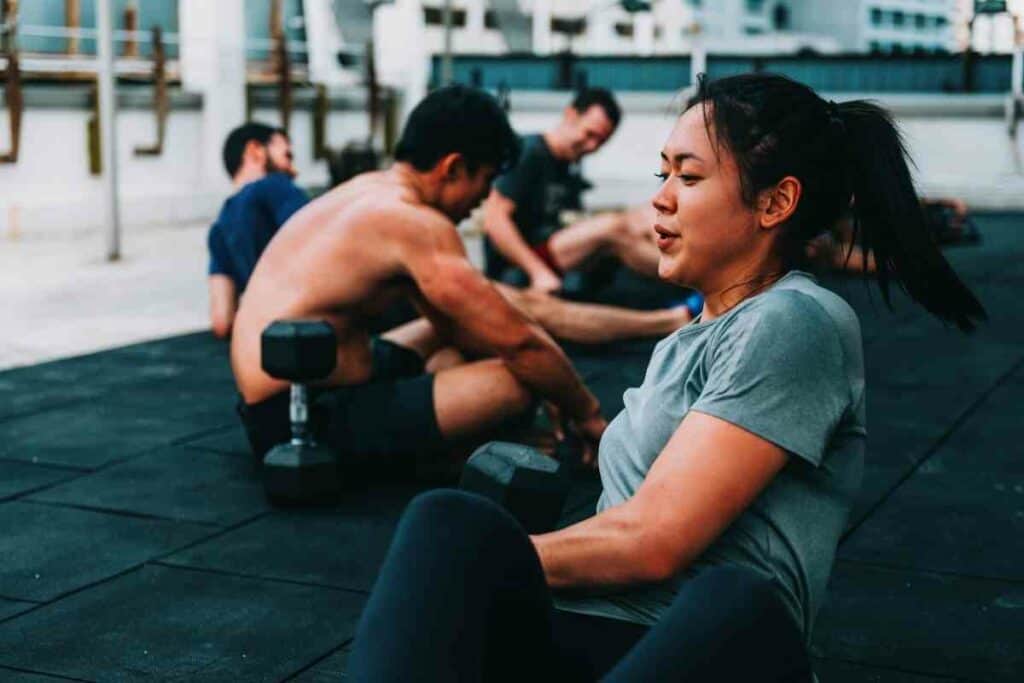
Any physical activity is great for cross-training like swimming, running, gym work, hiking, cycling, etc.
If you want something that really complements Kendo, try activities like yoga and Pilates that focus on breathing and posture, as this will really help you hone those skills.
10. Short Daily Fitness Drills
Creating a daily routine that combines strength work with stretching is great for Kendo.
Here are some things you could include:
- Sit on the floor with both of your legs stretched in front. Reach forward to your toes.
- Do 12 sit-ups and 12 push-ups, recover, and repeat the sets between three and five times each. Kendo requires a lot of accuracy and speed, which can be tiring on the arms.
How Long Should You Spend Practicing Kendo?
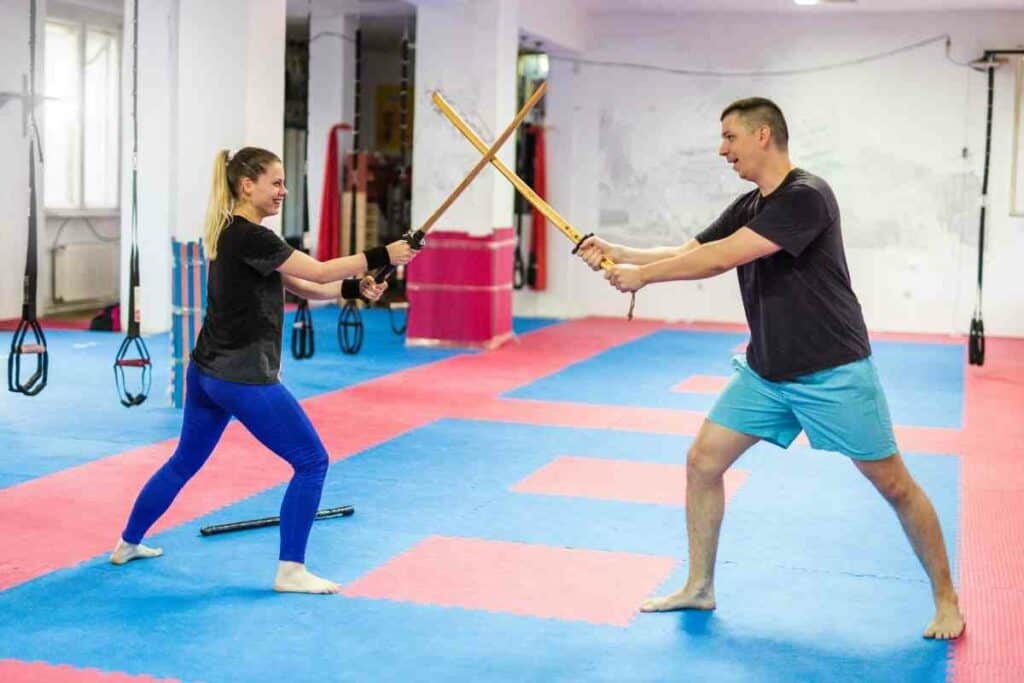
If you want to progress well, you should spend around six hours a week working on your Kendo – this includes time in class as well as time perfecting things at home.
Don’t expect to master everything quickly; Kendo is something that is developed over years.
Any practice you can do counts. Whether it’s Kendo or other activities that complement Kendo, it’s worth doing.
Final Thoughts
Kendo is all about developing your fighting spirit while working on your moral integrity.
Understanding the Kendo basics isn’t difficult and won’t take long, but mastering the movements takes practice and effort.
Doing drills at home is one way to ensure you continue developing your approach to Kendo and make progress.
The only ingredients you need are commitment, consistency, and hard work.
To Summarize – At home you can work on your footwork, posture, stance, basic, strikes, and other repetitive drills. You don’t even need to set aside a big chunk of time for this – any borrowed minute is great, you can even practice your stance and posture while waiting for your coffee to brew!

